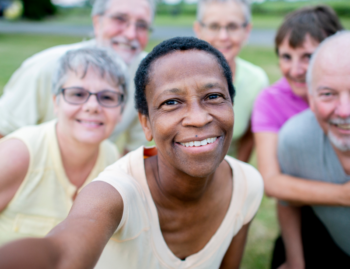
As we age, comfort becomes a top priority in our lives, and this extends to the clothing and footwear we choose to wear. Seniors often have unique needs when it comes to dressing comfortably, taking into account mobility issues, temperature sensitivity, and overall well-being. In this blog post, we will explore some essential recommendations for selecting comfortable clothing and footwear for seniors, ensuring they can enjoy a higher quality of life.
Comfortable Clothing
- Loose-Fitting Clothes: Opt for loose-fitting clothing to ensure freedom of movement. Avoid tight-fitting garments that can restrict mobility and cause discomfort.
- Soft, Breathable Fabrics: Choose clothing made from breathable materials like cotton, lined, or jersey. These fabrics allow for air circulation and help regulate body temperature.
- Front-Closure Clothing: Garments with front closures, such as button-down shirts or zip-up pants, make it easier to dress and undress for seniors with limited mobility.
- Adaptive Clothing: Consider adaptive clothing, which is specifically designed for seniors and individuals with disabilities. It features Velcro closures and elastic waistbands for convenience.
- Layering: Layering allows seniors to adapt to varying temperatures. Lightweight layers can be added or removed as needed, providing comfort in both warm and cold conditions.
- Seamless and Tagless Designs: Look for clothing with seamless and tagless designs to prevent skin irritation and discomfort.
- Non-Skid Socks: Choose non-skid socks to reduce the risk for slips and falls. They provide better grip on smooth surfaces.
- Compression Garments: Compression socks or stocking can help improve blood circulation and reduce swelling in the legs, which is common among older adults.
Comfortable Footwear
- Properly Fitted Shoes: Ensure that shoes fit correctly. Ill-fitting shoes can lead to foot pain and mobility issues. Consider professional fittings if needed.
- Low Heels: Opt for low-heeled shoes with good arch support. High heels can be uncomfortable and increase the risk of falls.
- Wide Toe Boxes: Shoes with wide toe boxes allow room for toes to move comfortably and help alleviate issues like bunions or hammertoes.
- Non-Slip Soles: Look for shoes with non-slip soles to enhance stability and prevent accidents on slippery surfaces.
- Easy Closure Systems: Velcro straps or slip-on shoes make it easier for seniors to put on and take off footwear without struggling with laces.
- Cushioned Insoles: Cushioned insoles provide extra comfort and support for aging feet.
- Breathable Materials: Choose shoes made from breathable materials to reduce the risk of moisture buildup and foot odors.
- Orthopedic Options: Some seniors may benefit from orthopedic shoes designed to alleviate specific food conditions or pains.
Special Considerations
It's important to recognize that the individual needs of seniors can vary greatly. Some may have specific medical conditions, such as diabetes, which require specialized footwear. Consult with a healthcare professional, such as a podiatrist or occupational therapist, for personalized recommendations.
In conclusion, comfortable clothing and footwear can significantly enhance the daily lives of seniors, promoting mobility, reducing discomfort, and increasing overall well-being. By paying attention to the specific needs and preferences of older adults and making informed choices, you can help them enjoy comfort and confidence in their daily routines.











